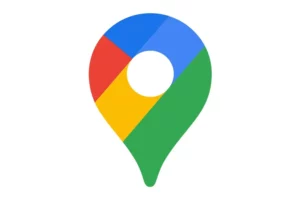When it comes to online privacy, few concepts spark as much confusion as Incognito Mode. Many users assume that browsing in Incognito Mode protects them from being tracked or monitored. After all, the name itself suggests anonymity, implying that your activities are hidden from prying eyes. But is this belief justified? Does Google—or any other website—really stop tracking you when you’re in Incognito Mode? Let’s delve into the truth behind this common misconception and uncover what Incognito Mode actually does (and doesn’t do).
What Is Incognito Mode?
Incognito Mode is a feature available in most modern browsers, including Google Chrome, Firefox, Safari, and Edge. When you enable Incognito Mode, your browser creates a temporary, isolated session that doesn’t save your browsing history, cookies, or site data after you close the window. This means that once you exit Incognito Mode, your activities won’t appear in your browser’s history or auto-fill suggestions.
The primary purpose of Incognito Mode is to provide a private browsing experience, allowing you to visit sites without leaving traces on your device. For example, if you’re researching gifts for someone else or accessing sensitive information, Incognito Mode can help shield your activity from casual observers, such as family members or roommates.
However, it’s important to note that Incognito Mode does not provide complete anonymity. It only affects your local device—it doesn’t alter how websites or third parties interact with you online.
The Myth: Incognito Mode Means No Tracking
The misconception arises from a misunderstanding of what Incognito Mode accomplishes. Many users assume that because their browser doesn’t save cookies or history, they’re invisible to the outside world. Unfortunately, this isn’t the case. Websites, advertisers, and even your internet service provider (ISP) can still track your activity in Incognito Mode.

Here’s why:
1. Website Tracking
Websites can still collect data about your visits, even when you’re in Incognito Mode. This includes information like your IP address, device type, location, and the pages you visit. While cookies and local storage aren’t saved on your device, websites can still use other methods to track you, such as:
- IP Address Logging: Your IP address uniquely identifies your device on the internet. Websites can log this information and use it to track your activity across multiple sessions.
- Device Fingerprinting: Even without cookies, websites can gather details about your browser version, screen resolution, installed fonts, and other characteristics to create a unique “fingerprint” of your device. This fingerprint allows websites to recognize you across different devices and sessions.
- Third-Party Tracking: Many websites embed third-party scripts, such as social media widgets or analytics tools, which can track your activity across multiple sites. These scripts often bypass Incognito Mode restrictions because they operate independently of your browser.
2. Advertising Networks
Advertising networks like Google Ads and Facebook Ads rely on persistent identifiers to track users across the web. These networks use cookies, browser fingerprints, and cross-site tracking to build detailed profiles of your interests and behaviors. Incognito Mode doesn’t disable these tracking mechanisms, so your activity is still visible to advertisers.
3. Internet Service Providers (ISPs)
Your ISP can see all the websites you visit, regardless of whether you’re in Incognito Mode or not. ISPs often log browsing history for billing purposes, troubleshooting, or compliance with government regulations. While they may not store this data indefinitely, it’s still accessible to them.
4. Search Engines
Even if you’re using Incognito Mode, search engines like Google can still track your queries and associate them with your account. If you’re signed into your Google account, your search history is tied to your profile, even in Incognito Mode. This is why logging out of your Google account before searching is essential for true anonymity.
The Reality: What Incognito Mode Actually Does
While Incognito Mode doesn’t offer complete anonymity, it does provide several benefits that make it useful for specific scenarios:
1. Private Browsing on Your Device
Incognito Mode prevents your browser from saving cookies, history, and cached data locally. This means that after you close the window, your activity won’t appear in your browser’s history or auto-fill suggestions. This is particularly helpful if you’re sharing a device with others and want to avoid leaving traces of your browsing habits.
2. Temporary Session Management
Incognito Mode creates a temporary session that isolates your browsing activity from your regular browsing history. This can help prevent cross-site tracking by limiting the amount of data stored on your device.
3. Reduced Cross-Site Tracking
While Incognito Mode doesn’t eliminate cross-site tracking entirely, it does reduce the amount of persistent data stored on your device. This makes it slightly harder for websites to link your activity across multiple sessions.
How to Achieve True Anonymity Online
If Incognito Mode isn’t enough to ensure true anonymity, what steps can you take to protect your privacy? Here are some practical strategies:
1. Use Privacy-Focused Browsers
Browsers like Tor Browser, Brave, and DuckDuckGo are designed with privacy in mind. They block third-party trackers, encrypt your traffic, and minimize data collection. For example, DuckDuckGo doesn’t track your searches or associate them with your IP address, making it a safer alternative to traditional search engines.
2. Enable HTTPS Everywhere
Always use secure connections by enabling the HTTPS Everywhere extension in your browser. This ensures that your data is encrypted when communicating with websites, reducing the risk of interception.
3. Use a Virtual Private Network (VPN)
A VPN masks your IP address and encrypts your internet traffic, making it difficult for websites and ISPs to track your activity. Popular options include NordVPN, ExpressVPN, and ProtonVPN.
4. Clear Cookies and Cache Regularly
Even outside Incognito Mode, regularly clearing your cookies and cache can help reduce tracking. Most browsers allow you to automate this process or manually delete stored data.
5. Disable JavaScript and Trackers
For ultra-secure browsing, consider disabling JavaScript and third-party trackers. Extensions like uBlock Origin and Ghostery can help block intrusive scripts and ads.
6. Log Out of Accounts
If you’re conducting sensitive searches or browsing, log out of your Google account and any other services you use. This ensures that your activity isn’t associated with your profile.
The Broader Implications of Tracking
The reality of online tracking extends far beyond individual users. It impacts the broader digital ecosystem, influencing everything from advertising to data privacy laws. Companies like Google and Facebook rely heavily on tracking to deliver targeted ads and generate revenue. However, this practice raises ethical concerns about consent and transparency.
Regulatory bodies are increasingly scrutinizing tracking practices. Laws like the General Data Protection Regulation (GDPR) in Europe and the California Consumer Privacy Act (CCPA) in the U.S. impose stricter requirements on data collection and usage. While these regulations provide some protection, they don’t eliminate the need for individual vigilance.
The myth of Incognito Mode as a panacea for online privacy is understandable but misguided. While Incognito Mode offers temporary privacy on your device, it doesn’t shield you from the pervasive tracking mechanisms used by websites, advertisers, and ISPs. True anonymity requires a combination of tools, habits, and awareness.
For most users, understanding the limitations of Incognito Mode is the first step toward better privacy. By using privacy-focused browsers, enabling encryption, and adopting responsible browsing practices, you can significantly reduce your exposure to tracking. And as the conversation around data privacy continues to evolve, so too will the tools and strategies available to protect your online identity.
Ultimately, the decision to use Incognito Mode or pursue more advanced privacy measures depends on your needs and comfort level. Whether you’re browsing casually or handling sensitive information, taking steps to safeguard your privacy ensures that you maintain control over your digital footprint.
















Add Comment